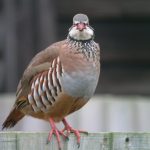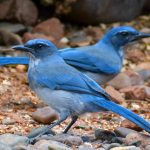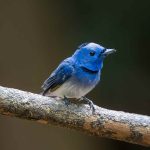
By the time I post this, I will be in Dublin, Ireland. This will be the beginning of a work trip to Spain and Morocco. But we always try to find somewhere new and interesting for the first few days of such trips, while we adjust to new time zones. This year’s choice was Dublin.
We have been making these trips annually for three years now. In 2022, I discovered that my aging back would really prefer we learn to travel carry-on only. Unfortunately, a 10 kilo (22 pound) limit doesn’t combine well with packing my trusty Canon Rebel T3 camera and Tamron 150-600 mm lens, as that combo weighs around four kilos. (My binoculars don’t add much weight, but they do consume some space.) So last year, I bit the bullet and bought a used Olympus mirrorless EM1 mark 2 camera, with a 400mm lens. This combo weighs just a bit over one kilo, and occupies about 1/3 the space of my old equipment.
As I was doing my research, I kept reading that the Olympus camera was spectacular, but also extremely complicated. Perhaps I should have listened. Or I should have come up with a grandchild with a love for photography, so they could teach this old dog some new tricks.
I have indeed travelled several times with my “new” camera. But the results have been, for the most part, decidedly mixed. Attempts to customize the Olympus, which reviews swear is its greatest strength, have almost always adversely affected my photographs.
But here we are, about to cross the Atlantic again, and I just cannot get around that weight limit. So last week, I decided to take the Olympus on yet another trial run, right here in Michoacán. But this time I decided to stop customizing, and just trust my camera. Hey, I had to watch a tutorial video just to reset to default. But once I did so, I only set my depth of field low, and did nothing more than to adjust the ISO (brightness) to the conditions of the moment. And what do you know? The results were very, very good!
We headed uphill that day. Or, perhaps I should say that we headed upmountain, as we ended up 3,000 m above sea level (10,000 feet). That, and the abundant rains we’ve had this year, meant everything was green, green, green. And here are the best photos:
It’s good to see our waterfalls roar back to life.

We saw a very shy male Red-headed Tanager. But the plant he hid behind was almost as picturesque as he was, so I still liked the effect.

Transvolcanic Jays tend to stay very high in the tall mountain trees, so this photo was surprisingly good.

We had chosen this route because one of my ornithologist friends had seen an unusual number of Amethyst-throated Mountain-Gems along it a couple days before. And they were kind enough to remain for us; we saw quite a few..
In spite of its colorful name, this hummingbird is not really all that colorful. But that bit of orange moustache is diagnostic.

There! Just a touch of amethyst throat color! (Trust me, it’s there.)

Like many hummingbirds, they can really be quite rude.

Chestnut-sided Shrike-Vireos have striking faces. But when they don’t show those, it can highlight their surprising pink legs and feet.

Male Hooded Orioles always put on quite a show. But I was surprised to see one at such a high altitude.

A fine photo of a Mexican Violetear. Perhaps this camera and I can get along afterall.

And this is probably my best photo yet of a Red Warbler.

Jonathan, the ornithologist friend with whom I (and another birder friend) went, had already located a population of threatened Michoacán River Salamanders in a nearby stream, after I told him about them. But he did not know that the Red Warbler site also has a populatino of these amphibians. They are closely related to the famous Axolotl, although River Salamanders do undergo a complete metamorphosis. The first photo shows an immature individual, still sporting gills (and enjoying a hefty meal of worm). The second, by far my best photo of the species, shows my first adult at this site. Adults lose their gills, but still live in the water, unlike most amphibian adults. Mexicans sometimes call these Ajolotes arroyeros, with the word Ajolote actually sounding almost exactly the like the word Axolotl (“ah-hoe-LOE-tae).















The Amethyst-throated Mountain-Gem really seems to have an amazing PR agent. Please send me his contact data – maybe he could help me promote my consulting business …
Also, great post title!
I’ve heard my fair share of frustrations from folks who had switched to Olympus. But also – some have gotten spectacular results with the OM system. Glad you’ve made headway with yours, these photos turned out pretty good!
A way around the carry-on weight limit: put the camera in your “one personal item”
Persevere with the Olympus, Paul, it’s worth it. I use an Olympus E-M1 Mk II with 150-400mm lens, and reckons that’s a pretty good combination for a birdwatcher who wants to photograph birds, as opposed to a serious photographer with an interest in birds. The OM-1 is more sophisticated than my camera, so with practice the results should be better than those I achieve. The weight saving of the OM system is significant, while there’s no need to use a tripod as the image stabilisation is outstanding.